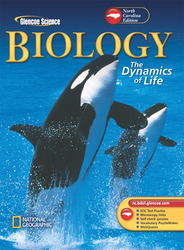 
Biology: The Dynamics of Life, North Carolina EditionChapter 19:
ProtistsWeb Links
| Click the Techie Toolbox for tips and help to make the most of your time on the Web.
 <a onClick="window.open('/olcweb/cgi/pluginpop.cgi?it=gif::::/sites/dl/free/0078675642/181784/techietoolbox.gif','popWin', 'width=NaN,height=NaN,resizable,scrollbars');" href="#"><img valign="absmiddle" height="16" width="16" border="0" src="/olcweb/styles/shared/linkicons/image.gif"> (2.0K)</a> <a onClick="window.open('/olcweb/cgi/pluginpop.cgi?it=gif::::/sites/dl/free/0078675642/181784/techietoolbox.gif','popWin', 'width=NaN,height=NaN,resizable,scrollbars');" href="#"><img valign="absmiddle" height="16" width="16" border="0" src="/olcweb/styles/shared/linkicons/image.gif"> (2.0K)</a>
p. 502
 <a onClick="window.open('/olcweb/cgi/pluginpop.cgi?it=gif::::/sites/dl/free/0078675642/181784/biology_online.gif','popWin', 'width=NaN,height=NaN,resizable,scrollbars');" href="#"><img valign="absmiddle" height="16" width="16" border="0" src="/olcweb/styles/shared/linkicons/image.gif"> (1.0K)</a> <a onClick="window.open('/olcweb/cgi/pluginpop.cgi?it=gif::::/sites/dl/free/0078675642/181784/biology_online.gif','popWin', 'width=NaN,height=NaN,resizable,scrollbars');" href="#"><img valign="absmiddle" height="16" width="16" border="0" src="/olcweb/styles/shared/linkicons/image.gif"> (1.0K)</a>
| | Protist Image Data, University of Montreal | | The University of Montreal maintains this site, which provides information on selected genera of algae and protozoa. View the photographs and read about the characteristics of these organisms. How does the shape of Cryptomonas cells compare to that of Chlamydomonas cells?
(
http://megasun.bch.umontreal.ca/protists/protists.html
) |  |  |  | | Sonnet 2: The Age of Protists | | Raphael Carter writes poetry about science. Read the sonnet about protists and then write your own protist poem in your science journal.
(
http://www.chaparraltree.com/scison/protists.shtml
) |  |  |  | | Protists | | Here is an introduction to protists. Visit this site, then design your own Web page that shows their history and evolution.
(
http://www.microbe.org/microbes/protists1.asp
) |  |  |  |
p. 523
 <a onClick="window.open('/olcweb/cgi/pluginpop.cgi?it=gif::::/sites/dl/free/0078675642/181784/biolab.gif','popWin', 'width=NaN,height=NaN,resizable,scrollbars');" href="#"><img valign="absmiddle" height="16" width="16" border="0" src="/olcweb/styles/shared/linkicons/image.gif"> (1.0K)</a> <a onClick="window.open('/olcweb/cgi/pluginpop.cgi?it=gif::::/sites/dl/free/0078675642/181784/biolab.gif','popWin', 'width=NaN,height=NaN,resizable,scrollbars');" href="#"><img valign="absmiddle" height="16" width="16" border="0" src="/olcweb/styles/shared/linkicons/image.gif"> (1.0K)</a>
| | Marine Plants and Algae | | This page focuses on a certain group of protists -- algae. Visit this site to learn more about these organisms. Then visit a local body of water to collect some algae and try to identify its species.
(
http://www.mobot.org/MBGnet/salt/plants/index.htm
) |  |  |  | | Dinoflagellates | | Visit this site to find out what dinoflagellates are and the big problem they can cause with the production of toxins. View the scanning electron microscope images to compare their body shapes. What structure do they have in common?
(
http://www.glencoe.com/sec/science/top2.html&link=http://www.geo.ucalgary.ca/~macrae/palynology/dinoflagellates/dinoflagellates.html
) |  |  |  | | Views of the Famine | | This page shows the media and public's view of the Irish potato famine. View some of the cartoons from Punch magazine that show sympathy for the Irish. Make your own editorial cartoon to make a point about this issue.
(
http://vassun.vassar.edu/~sttaylor/FAMINE
) |  |  |  |
p. 524
 <a onClick="window.open('/olcweb/cgi/pluginpop.cgi?it=gif::::/sites/dl/free/0078675642/181784/bio_technology.gif','popWin', 'width=NaN,height=NaN,resizable,scrollbars');" href="#"><img valign="absmiddle" height="16" width="16" border="0" src="/olcweb/styles/shared/linkicons/image.gif"> (2.0K)</a> <a onClick="window.open('/olcweb/cgi/pluginpop.cgi?it=gif::::/sites/dl/free/0078675642/181784/bio_technology.gif','popWin', 'width=NaN,height=NaN,resizable,scrollbars');" href="#"><img valign="absmiddle" height="16" width="16" border="0" src="/olcweb/styles/shared/linkicons/image.gif"> (2.0K)</a>
| | Diatoms | | Visit this site to learn more about diatoms. Why are diatoms tools for researchers in modern ecology and evolution?
(
http://www.indiana.edu/~diatom/diatom.html
) |  |  |  | | Diatoms | | This site contains additional information on diatoms. Click on one of the links at the bottom of the page to learn more.
(
http://www.ucmp.berkeley.edu/chromista/bacillariophyta.html
) |  |  |  | | Diatoms | | This site is maintained by the California Academy of Sciences. Click on the link "Introduction to Diatoms." What are the two central groups of diatoms?
(
http://www.calacademy.org/research/diatoms/
) |  |  |  |
p. 527
 <a onClick="window.open('/olcweb/cgi/pluginpop.cgi?it=gif::::/sites/dl/free/0078675642/181784/real_world_bio.gif','popWin', 'width=NaN,height=NaN,resizable,scrollbars');" href="#"><img valign="absmiddle" height="16" width="16" border="0" src="/olcweb/styles/shared/linkicons/image.gif"> (1.0K)</a> <a onClick="window.open('/olcweb/cgi/pluginpop.cgi?it=gif::::/sites/dl/free/0078675642/181784/real_world_bio.gif','popWin', 'width=NaN,height=NaN,resizable,scrollbars');" href="#"><img valign="absmiddle" height="16" width="16" border="0" src="/olcweb/styles/shared/linkicons/image.gif"> (1.0K)</a>
| | Malaria | | This site contains electron micrographs of the asexual reproduction of malaria. Click on the link "Malaria Parasites" to find the images.
(
http://www.wehi.edu.au/MalDB-www/who.html
) |  |  |  | | Malaria | | This site maintained by the Royal Perth Hospital in Australia contains interesting information about malaria. Click on the link "history" at the bottom of the page to find more information.
(
http://www.rph.wa.gov.au/labs/haem/malaria/
) |  |  |  | | Malaria | | This site is maintained by the World Health Organization and gives a global perspective on this disease. Click on one of the many links on this page to find more information.
(
http://www.who.int/health-topics/malaria.htm
) |  |  |  |
 |  |
|







